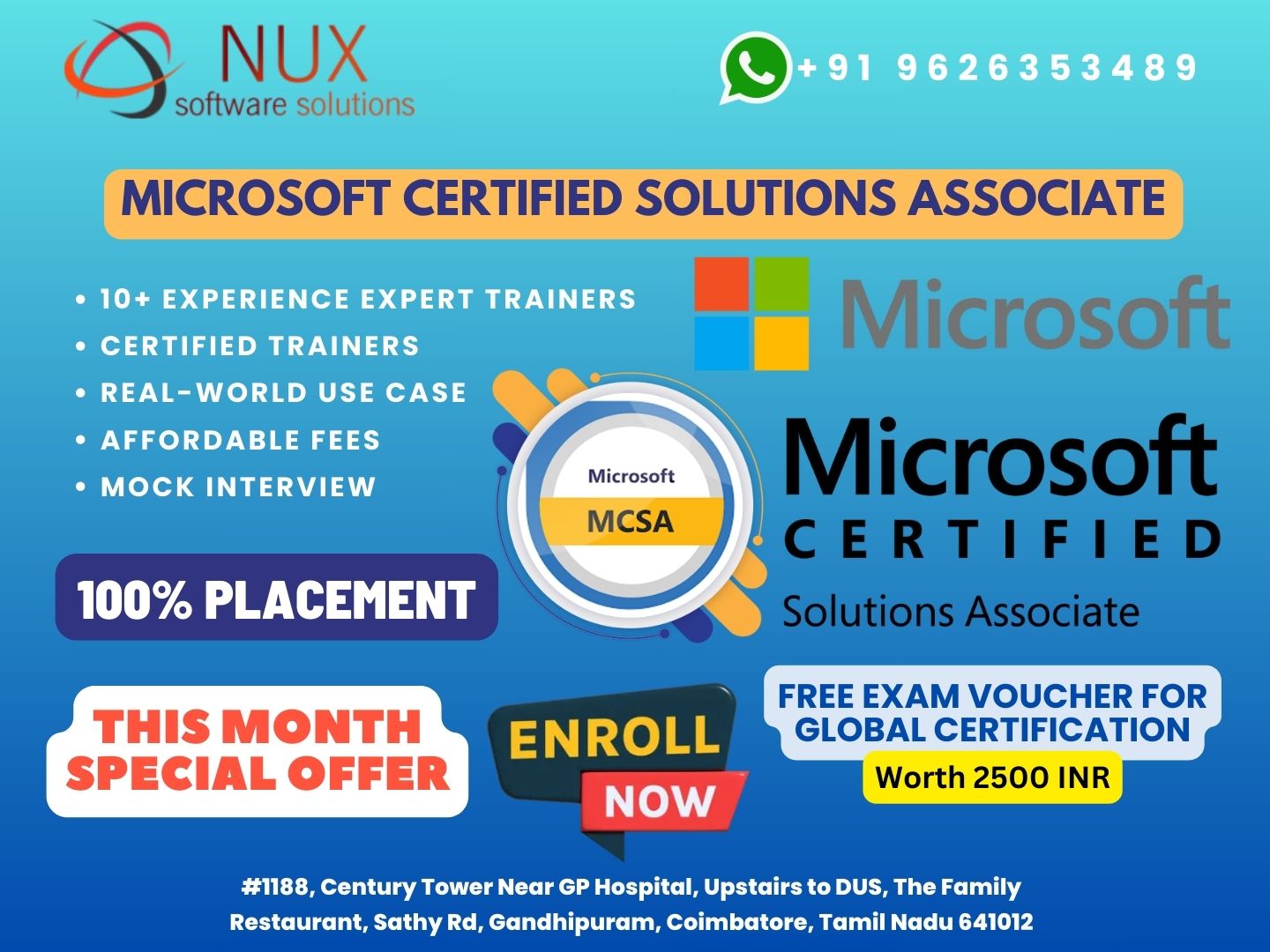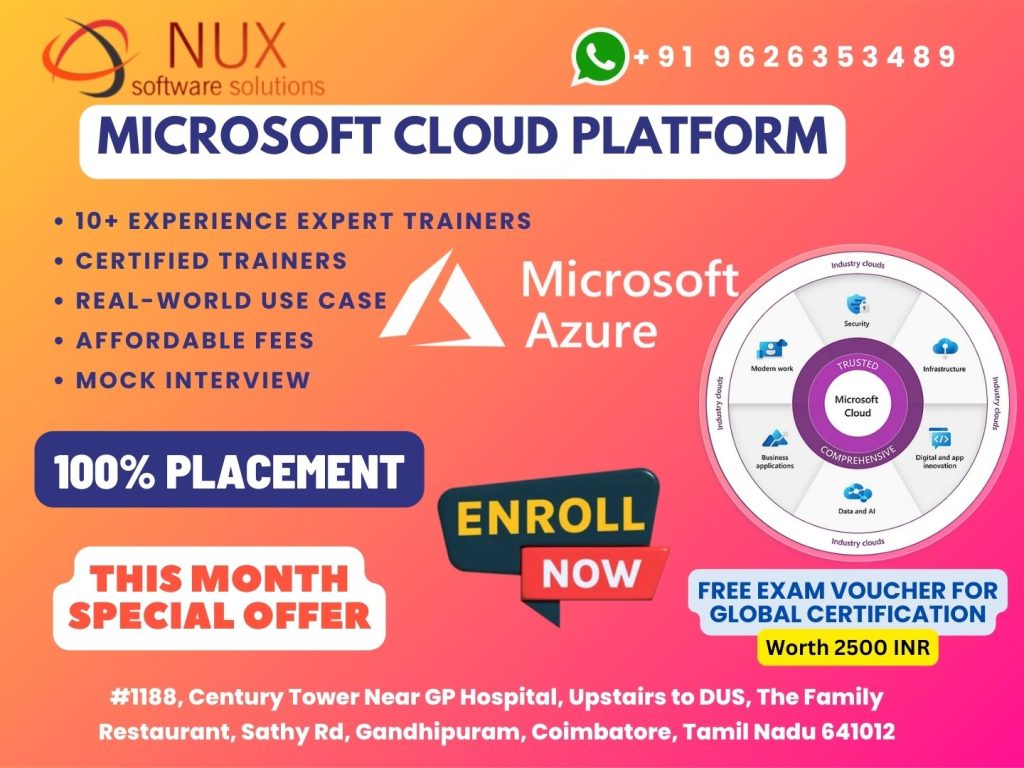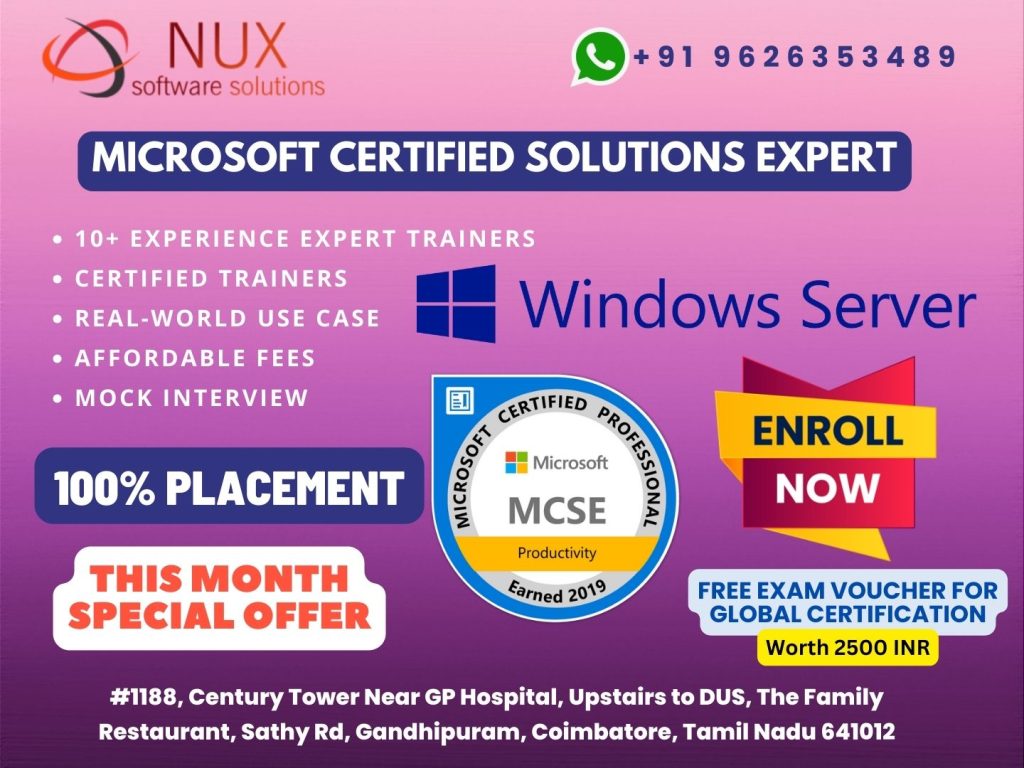Microsoft Certified Solutions Associate (MCSA)

Course Summary
The Microsoft Certified Solutions Associate (MCSA) certification was globally recognized as the starting point for many Microsoft certification tracks, including systems administration, cloud fundamentals, and database management. While now retired and replaced by role-based certifications, MCSA remains highly relevant for professionals seeking foundational skills in Windows Server, Microsoft SQL Server, Office 365, or Azure.
This training equips learners with the essential capabilities to manage Microsoft environments and prepare for higher-level certifications such as MCSE, Azure Administrator (AZ-104), or Microsoft 365 Administrator (MS-102).
Why Choose This Course
MCSA certifications were built to give professionals job-ready skills aligned with real enterprise needs. This course:
Covers critical Microsoft infrastructure and platform technologies
Helps build your career path across systems, networking, database, or cloud domains
Prepares you for modern Microsoft certification upgrades and transitions
Offers hands-on labs, mock tests, and case-based training scenarios
Is ideal for students, IT freshers, and junior system administrators
Linux Training Center provides a practical training approach to ensure you’re not just exam-ready — you’re job-ready.
Who Should Enroll
This course is ideal for:
Students and recent graduates starting their IT careers
IT support engineers and system administrators
Database professionals working with Microsoft SQL Server
Professionals managing Windows Server environments or Office 365 platforms
Anyone pursuing Microsoft role-based certifications but needing foundational technical skills first
Skills You Will Gain
Core system administration using Windows Server OS and Active Directory
Basic network configuration, security setup, and access management
Foundational understanding of SQL Server database management
Configuration of Office 365 and Microsoft cloud services
Readiness to manage Microsoft workloads on-premises and in hybrid environments
Troubleshooting, user management, and server maintenance expertise
Career Benefits
After completing this training, you will:
Be ready for job roles such as System Administrator, Desktop Support Engineer, Junior Network Engineer, or Technical Support Specialist
Build the core skills required for Microsoft 365, Azure, or Server Infrastructure certifications
Be equipped to work in IT teams supporting Microsoft-based environments across industries
Transition smoothly to role-based certifications like AZ-900, AZ-104, or MS-102
Gain practical experience valued by SMBs, enterprises, and managed service providers
Your Microsoft Career Starts Here
The MCSA track laid the groundwork for millions of IT careers globally. Even today, its content and structure remain valuable for those entering or growing in the Microsoft technology space.
Build your foundation — Enroll in MCSA Certification Training today.
Microsoft Certified Solutions Associate (MCSA) Syllabus
Modules
1. Configuring DNS for Active Directory
- Configuring zones
- Configuring DNS server settings
- Configuring zone transfer and Replication
- Configuring the AD infrastructure
- Configuring a forest or a domain
- Configuring trusts
- Configuring sites
- Configuring AD replication
- Configuring the global catalog
- Configuring operation masters
- Configuring additional AD server roles
- Configuring AD Lightweight Directory Services (AD LDS)
- Configuring AD Rights Management Service (AD RMS)
- Configuring read-only domain controller (RODC)
- Configuring AD Federation Services (AD FS)
2. Configuring and maintaining AD objects
- Automate creation of AD accounts
- Maintain AD accounts
- Create and apply Group Policy objects (GPOs)
- Configure GPO templates
- Configure software deployment GPOs
- Configure account polices
- Configure audit policy by using GPOs
3. Maintaining the AD environment
- Configuring backup and recovery
- Perform offline maintenance
- Monitor AD
4. Configuring AD Certificate Services
- Install AD Certificate Services
- Configure CA server settings
- Manage certificate templates
- Manage Enrollments
- Manage Certificate revocations
5. Configuring IP Addressing and Services
- Configuring IPv4 and IPv6 addressing
- Configuring Dynamic Host Configuration Protocol (DHCP)
- Configuring routing -Configuring IPsec
6. Configuring Name Resolution
- Configuring DNS Server
- Configuring DNS zones
- Configuring DNS records
- Configuring DNS replication
- Configuring name resolution for client computers
7. Configuring Network Access
- Configure remote access
- Configure Network Access Protection (NAP)
- Configure network authentication
- Configure wireless access
- Configure firewall settings
8. Configuring File and Print Services
- Configure a file server
- Configure Distributed File System (DFS)
- Configure shadow copy services
- Configure backup and restore
- Manage Disk Quotas
- Configure and monitor print services
9. Monitoring and Managing a Network Infrastructure
- Configure Windows Server Update Services (WSUS) server settings
- Capture performance data
- Monitor event logs
- Gather network data
10. Deploy Servers
- Deploy images by using Windows Deployment Services
- Configure Microsoft Windows Activation
- Configure high availability
- Configure storage
11. Configuring Terminal Services
- Configure Windows Server 2008 Terminal Services RemoteApp (TS RemoteApp)
- Configure Terminal Services Gateway
- Configure Terminal Services load balancing
- Configure and monitor Terminal Services resources
- Configure Terminal Services Licensing
- Configure Terminal Services client connections
- Configure Terminal Services server options
12. Configuring a Web Services Infrastructure
- Configure Web applications
- Manage Web sites
- Configure a File Transfer Protocol (FTP) server
- Configure Simple Mail Transfer Protocol (SMTP).
- Manager Internet Information Services (IIS)
- Configure SSL security
- Configure Web site authentication and permissions
13.Configuring Network Application Services
- Configure Windows Media Server
- Configure Digital Rights Management (DRM)
- Configure Microsoft Windows SharePoint Services server options
- Configure Windows SharePoint Services e-mail integration



